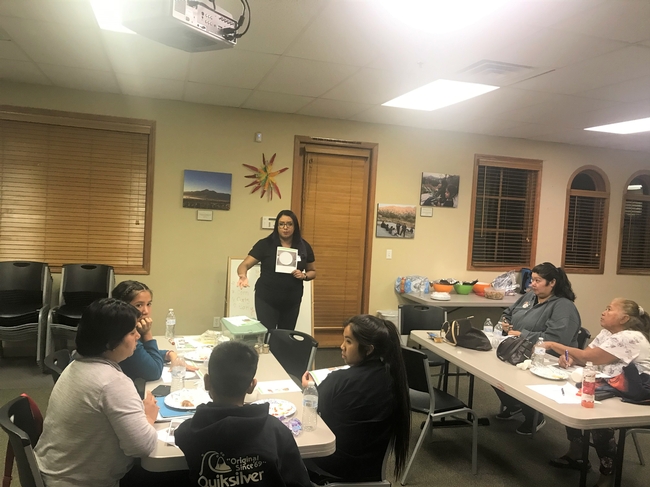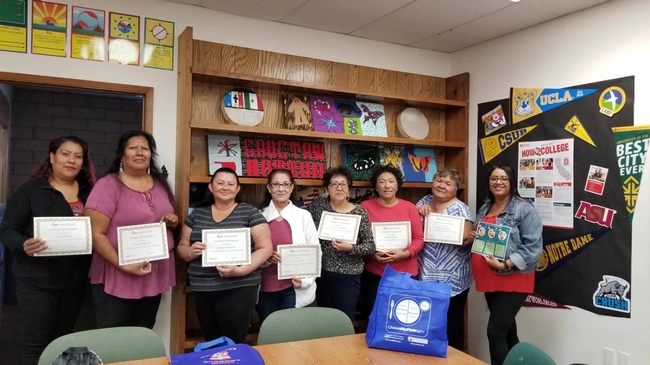Families participating in EFNEP report eating healthy on a budget and saving $44 per month, contributing to increased food security.
The Issue
Efforts to strengthen nutrition and food security is needed more than ever as families with young children face unprecedented challenges due to the COVID pandemic. The rising food insecurity in California and across the Nation is concerning. Food insecurity is linked to poor dietary outcomes and obesity. The EFNEP program in Tulare continues to empower families to support family health and resiliency (i.e. resourceful) with knowledge and skills to adopt healthy behaviors across four core areas of nutrition/physical activity, food resource management, food security, and food safety.
How UC Delivers
During FFY2019-20, a trained bilingual EFNEP Nutrition Educator implemented the evidence-based nine lesson series of Eating Smart Being Active in Spanish and English. Each class was held once a week for 60-90 minutes spanning nine weeks. Participants were recruited from community-based settings with program implementation occurring at 15 sites in Tulare county. Participants engage in hands-on learning about food planning, budgeting and shopping, healthy foods, cooking at home with cost-effective recipes, food safety practices, and physical activity. Of the 149 program families reached, 136 participants who attended all the lessons graduated from EFNEP. Furthermore, this effort developed strong community partnerships including establishing new partnerships with Native American Tribal organizations.

The Impact
Parents who completed the series (n=136) reported improvements in all the program areas: a) 88% of participants showed improvement in one or more food resource management practices (i.e., cook dinner at home, compare food prices, plan meals before shopping, look in refrigerator or cupboard before shopping, or make a list before shopping), b) 92% of participants showed improvement in one or more diet quality indicators (i.e., eating fruits, vegetables, red and orange vegetables, dark green vegetables, drinking less regular soda (not diet), drinking less fruit punch, fruit drinks, sweet tea, or sports drinks, and cooking dinner at home), c) 88% of participants showed improvement in one or more food safety practices (i.e., washing hands before preparing food, washing all items and surfaces after cutting raw meat or seafood, not thawing frozen food at room temperature, or using a meat thermometer), and d) 91% of participants showed improvement in one or more physical activity behaviors (i.e., exercising for at least 30 minutes, doing workouts to build and strengthen muscles, or making small changes to be more active).
A noteworthy program impact was a random sample (n=19) of these participants reported saving an average of $44.50 on food per month. These measured outcomes contribute to improved food security and the public value of sufficient, safe, and healthy food for all Californians.

“OVCDC had a pleasure in collaborating with the University of California & Agriculture and Resources, Mariana was a wonderful facilitator. Our families who attended really enjoyed the sessions, in which they learned a lot. Going forward we would like to continue this collaboration and reach more families.” - Community Partner
“I love how these recipes are easy and very cost effective.” - Community Partner
“I really enjoyed this class…I enjoyed seeing how excited [daughter] was at each class, and hearing her awesome achievements in learning how to cook healthier meals for her family” - Parent Participant